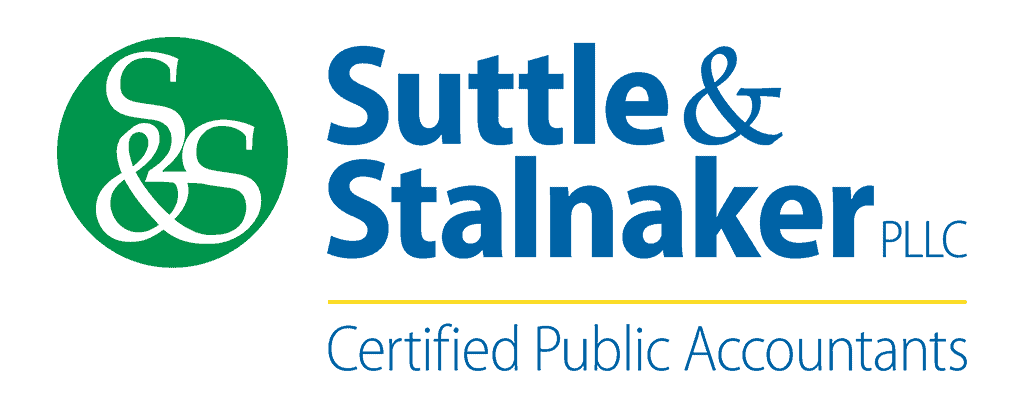The Patient Protection and Affordable Care Act (PPACA or ACA) requires certain employers to report to the IRS annually regarding the health care coverage they offer to full-time employees.
Under Section 6056 of the Internal Revenue Code, an Applicable Large Employer (ALE) must report information on Form 1095-C that discloses if an employer is subject to an assessment of a Shared Responsibility Payment. The report also determines if full-time employees are eligible for a premium tax credit, which helps pay for health insurance if the employee purchases it on the Health Insurance Marketplace. Generally, an ALE is an employer with fifty (50) or more full-time equivalent (FTE) employees. If you are unsure whether your organization is an ALE, contact us to discuss.
If Suttle & Stalnaker prepared your 2021 1095-C forms, we have already sent you the 2022 data template. If you have not yet received the information, please give us a call.
If we did not prepare your 2021 forms, please contact Kara Garibian or Drema Foster so we can discuss your filing requirements and get you started tracking 2022 information. If you have any questions, please let us know.
REPORTING DEADLINES
The deadlines are as follows:
March 2, 2023 – Form 1095-C must be furnished by ALEs to all full-time employees
February 28, 2023 – Filing of Form 1095-C due for 2022, if filed on paper
March 31, 2023 – Filing of Form1095-C due for 2022, if filed electronically
POTENTIAL PENALTIES
The Affordable Care Act (ACA) includes employer shared responsibility provisions under Section 4980H of the Internal Revenue Code, which potentially assesses a tax penalty to applicable large employers (ALEs) who fail to offer minimum essential coverage (MEC) to 95% of its full-time employees. ALEs also may be assessed penalties if they fail to offer affordable coverage that meets minimum value requirements. This provision is commonly referred to as “pay or play,” because ALEs potentially pay a penalty if they do not offer coverage that meets ACA requirements, and one or more full-time employees obtain subsidized coverage through a health care Marketplace (also referred to as the Exchange).
The employer shared responsibility penalty was initially set at $2,000 and $3,000 with an inflation adjustment beginning in calendar years after 2014. For calendar year 2022, the adjusted $2,000 amount is $2,750 and the adjusted $3,000 amount is $4,120. For calendar year 2023, the adjusted $2,000 amount is $2,880 and the adjusted $3,000 amount is $4,320.
Pay or Play Penalty Calculation
Under the pay or play rules, an applicable large employer (ALE) is only liable for a penalty if at least one full-time employee receives a subsidy for Exchange coverage. Employees who are offered affordable, minimum value (MV) coverage are generally not eligible for these Exchange subsidies.
Depending on the circumstances, one of two penalties may apply under the pay or play rules—the 4980H(a) penalty or the 4980H(b) penalty.
- Under Section 4980H(a), an ALE will be subject to a penalty if it does not offer coverage to “substantially all” (generally, at least 95%) of its full-time employees (and dependents) and any one of its full-time employees receives a subsidy toward his or her Exchange plan. The monthly penalty assessed on ALEs that do not offer coverage to substantially all full-time employees and their dependents is equal to the ALE’s number of full-time employees (minus 30) multiplied by 1/12 of $2,000 (as adjusted), for any applicable month.
- Under Section 4980H(b), ALEs that offer coverage to substantially all full-time employees (and dependents) may still be subject to a penalty if at least one full-time employee obtains a subsidy through an Exchange because the ALE did not offer coverage to all full-time employees, or the ALE’s coverage is unaffordable or does not provide MV. The monthly penalty assessed on an ALE for each full-time employee who receives a subsidy is 1/12 of $3,000 (as adjusted) for any applicable month. However, the total penalty for an ALE is limited to the 4980H(a) penalty amount.
TIN Mismatch [Social Security Number (SSN)] Errors
By far the most common error message received from the IRS on a given employee’s 1095-C form are TIN mismatch errors. This means a social security number (SSN) that was specified on the 1095-C does not match what the IRS database has on file for the name provided. This could be for either the employee themselves and/or an employee’s dependent (if part III of the 1095-C was populated) and the employer will need to check both the spelling of the person’s and/or dependent’s name AND the social security numbers.
Common reasons for mismatches are:
- Use of maiden name or married name in the system when IRS has something else on file
- Mistyped information or bad data entry
- Employees using fraudulent SSN numbers
Employers are expected to make a reasonable measure of effort to secure the correct combination of SSN and name for the forms or be subject to penalties from the IRS. Employers must demonstrate they made at least three reasonable attempts to obtain the correct information.
NO GOOD-FAITH RELIEF FOR FILING AND FURNISHING
“Good-Faith Relief” is no longer applicable for the calendar year 2022 reporting. IRS penalties for ACA reporting non-compliance are high and can have a significant impact on your organization’s bottom line. Please make sure to include accurate, complete employee information (including full legal employee names, and Social Security numbers, or date of birth) to avoid penalties from the IRS.
Our HR Consulting team has the knowledge and expertise to help you and your business navigate the Affordable Care Act (ACA) reporting complexities. Please contact Kara Garibian or Drema Foster if you need assistance with reporting or if you have other ACA related questions or concerns.
